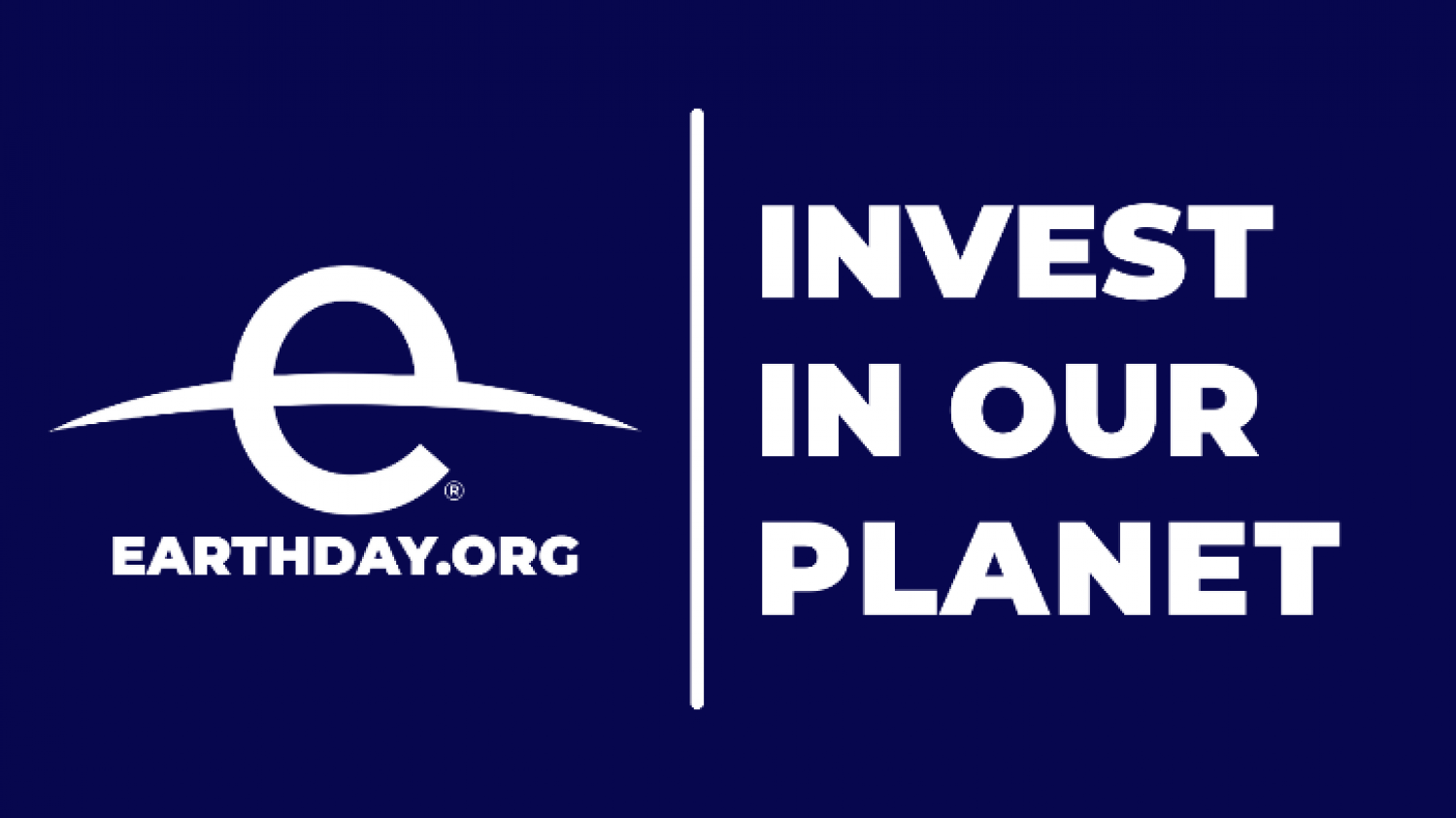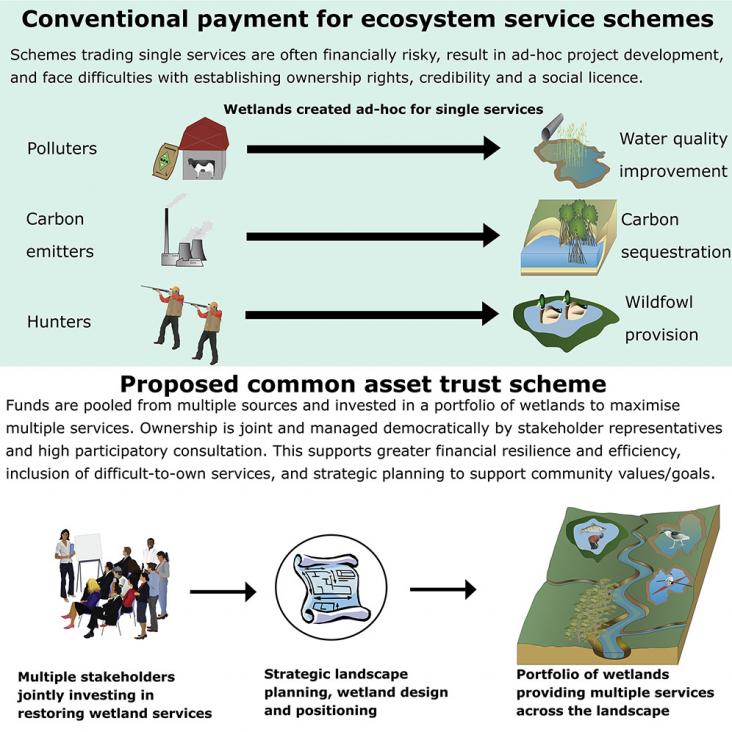
The Lancet Public Health, Volume 7, November 2022
The Lancet Global Health, Volume 10, October 2022
The Lancet Planetary Health, Volume 6, August 2022
The Lancet Global Health, Volume 10, June 2022
The Lancet Global Health, Volume 10, June 2022
Environmental Advances, Volume 10, December 2022
Environmental Advances, Volume 8, July 2022
Science of the Total Environment, Volume 806, 1 February 2022
One Earth, Volume 3, 18 September 2020
The recession and debt distress accompanying coronavirus disease 2019 (COVID-19) pose serious threats to governments’ ability to invest in achieving the Sustainable Development Goals, raising the specter of another lost decade for climate action. However, fiscal policy can be designed to simultaneously stabilize the economy and public finances while advancing sustainable development.
Imran Khan, Md. Sahabuddin, Chapter 1 - Sustainability---Concept and its application in the energy sector, Editor(s): Imran Khan, Renewable Energy and Sustainability, Elsevier, 2022, Pages 1-22, ISBN 9780323886680.
Mahfuz Kabir, Zobaidul Kabir, Nigar Sultana, Chapter 14 - Climate change, sustainability, and renewable energy in developing economies, Editor(s): Imran Khan, Renewable Energy and Sustainability, Elsevier, 2022, Pages 377-415, ISBN 9780323886680, https://doi.org/10.1016/B978-0-323-88668-0.00001-2.
Martin Siegert, Fabio Florindo, Laura De Santis, Tim R. Naish, Chapter 13 - The future evolution of Antarctic climate: conclusions and upcoming programmes, Editor(s): Fabio Florindo, Martin Siegert, Laura De Santis, Tim Naish, Antarctic Climate Evolution (Second Edition), Elsevier, 2022, Pages 769-775, ISBN 9780128191095, https://doi.org/10.1016/B978-0-12-819109-5.00005-0.
Paolo Tarolli, Giulia Sofia, Chapter 9 - Remote sensing for the analysis of anthropogenic geomorphology: Potential responses to sediment dynamics in the agricultural landscapes, Editor(s): Paolo Tarolli, Simon M. Mudd, Developments in Earth Surface Processes, Elsevier, Volume 23, 2020, Pages 255-269, ISSN 0928-2025, ISBN 9780444641779, https://doi.org/10.1016/B978-0-444-64177-9.00009-6.
Michael F. Ashby, Chapter 3 - What is a ‘Sustainable Development’?, Editor(s): Michael F. Ashby, Materials and Sustainable Development (Second Edition), Butterworth-Heinemann, 2022, Pages 51-68, ISBN 9780323983617.
Michael F. Ashby, Chapter 18 - Wave Power, Editor(s): Michael F. Ashby, Materials and Sustainable Development (Second Edition), Butterworth-Heinemann, 2024, Pages 409-424, ISBN 9780323983617, https://doi.org/10.1016/B978-0-323-98361-7.00018-X.
Roberta Mendonça De Carvalho, Claudio Fabian Szlafsztein, Ecosystem Services and Air Pollution - Nature's Main Provider Interconnects Forest and Cities to Regulate Air Quality, Editor(s): Dominick A. DellaSala, Michael I. Goldstein, Imperiled: The Encyclopedia of Conservation, Elsevier, 2022, Pages 88-97, ISBN 9780128211397
Mark John Costello, Restoring Biodiversity and Living With Nature (Based Solutions), Editor(s): Dominick A. DellaSala, Michael I. Goldstein, Imperiled: The Encyclopedia of Conservation, Elsevier, 2022, Pages 7-14, ISBN 9780128211397
Kamil Maciuk, Chapter 9 - GNSS monitoring natural and anthropogenic phenomena, Editor(s): George p. Petropoulos, Prashant K. Srivastava, GPS and GNSS Technology in Geosciences, Elsevier, 2021, Pages 177-197, ISBN 9780128186176, https://doi.org/10.1016/B978-0-12-818617-6.00007-X.
Antigoni Faka, Konstantinos Tserpes, Christos Chalkias, Chapter 10 - Environmental sensing: a review of approaches using GPS/GNSS, Editor(s): George p. Petropoulos, Prashant K. Srivastava, GPS and GNSS Technology in Geosciences, Elsevier, 2021, Pages 199-220, ISBN 9780128186176, https://doi.org/10.1016/B978-0-12-818617-6.00013-5.
Sabiha Sultana, A.N.V. Satyanarayana, Chapter 4 - Urban heat island: land cover changes, management, and mitigation strategies, Editor(s): Ansar Khan, Hashem Akbari, Francesco Fiorito, Sk Mithun, Dev Niyogi, Global Urban Heat Island Mitigation, Elsevier, 2022, Pages 71-93, ISBN 9780323855396, https://doi.org/10.1016/B978-0-323-85539-6.00009-3.
Mohamed Dardir, Umberto Berardi, Chapter 13 - Air quality and heat-related health impacts of increasing urban greenery cover, Editor(s): Ansar Khan, Hashem Akbari, Francesco Fiorito, Sk Mithun, Dev Niyogi, Global Urban Heat Island Mitigation, Elsevier, 2022, Pages 269-300, ISBN 9780323855396, https://doi.org/10.1016/B978-0-323-85539-6.00008-1.
Miguel Amado, Francesca Poggi, Chapter 1 - Cities Evolution, Editor(s): Miguel Amado, Francesca Poggi, Sustainable Energy Transition for Cities, Elsevier, 2022, Pages 1-17, ISBN 9780128242773, https://doi.org/10.1016/B978-0-12-824277-3.00002-5.
Ali Jalali, Phillip B. Roös, Murray Herron, Paras Sidiqui, Emma Duncan, Chapter 24 - Predictive modeling for reforestation of cities to mitigate climate change impacts, Editor(s): Zaheer Allam, Didier Chabaud, Catherine Gall, Florent Pratlong, Carlos Moreno, Resilient and Sustainable Cities, Elsevier, 2023, Pages 441-456, ISBN 9780323917186, https://doi.org/10.1016/B978-0-323-91718-6.00014-1.
Reinhard Madlener, Robert Crump, 17 - Grid-friendly clean energy communities and induced intracommunity cash flows through peer-to-peer trading. Editor(s): Sabine Löbbe, Fereidoon Sioshansi, David Robinson, 'Energy Communities', Academic Press, 2022, Pages 277-301, ISBN 9780323911351
David E. Reichle, Chapter 10 - The global carbon cycle and the biosphere, Editor(s): David E. Reichle, The Global Carbon Cycle and Climate Change (Second Edition), Elsevier, 2023, Pages 235-283, ISBN 9780443187759, https://doi.org/10.1016/B978-0-443-18775-9.00014-0.
David E. Reichle, Chapter 9 - Ecosystem productivity, Editor(s): David E. Reichle, The Global Carbon Cycle and Climate Change (Second Edition), Elsevier, 2023, Pages 197-232, ISBN 9780443187759, https://doi.org/10.1016/B978-0-443-18775-9.00007-3.
Sarah Perkins-Kirkpatrick, Donna Green, Chapter 2 - Extreme heat and climate change, Editor(s): Yuming Guo, Shanshan Li, Heat Exposure and Human Health in the Context of Climate Change, Elsevier, 2023, Pages 5-36, ISBN 9780128190807, https://doi.org/10.1016/B978-0-12-819080-7.00006-9.
Kunal Singha, Subhankar Maity, Pintu Pandit, Saptarshi Maiti, Shanmugasundaram O. Lakshmanan, Chapter One - Nanotechnologies for wastewater treatment, Editor(s): Subramanian Senthilkannan Muthu, In The Textile Institute Book Series, Sustainable Technologies for Textile Wastewater Treatments, Woodhead Publishing, 2021, Pages 1-12, ISBN 9780323858298, https://doi.org/10.1016/B978-0-323-85829-8.00009-2.
Or Aleksandrowicz, Chapter 1 - Mapping and management of urban shade assets: a novel approach for promoting climatic urban action, Editor(s): Ansar Khan, Hashem Akbari, Francesco Fiorito, Sk Mithun, Dev Niyogi, Global Urban Heat Island Mitigation, Elsevier, 2022, Pages 1-27, ISBN 9780323855396, https://doi.org/10.1016/B978-0-323-85539-6.00003-2
Kunal Singha, Subhankar Maity, Pintu Pandit, Md. Ibrahim H. Mondal, Chapter 1 - Introduction to protective textiles, Editor(s): Md. Ibrahim H. Mondal, In The Textile Institute Book Series, Protective Textiles from Natural Resources, Woodhead Publishing, 2022, Pages 3-38, ISBN 9780323904773, https://doi.org/10.1016/B978-0-323-90477-3.00023-7.
Sanjay Mavinkere Rangappa, Madhu Puttegowda, Jyotishkumar Parameswaranpillai, Suchart Siengchin, Togay Ozbakkaloglu, Hao Wang, Chapter 1 - Introduction to plant fibers and their composites, Editor(s): Sanjay Mavinkere Rangappa, Jyotishkumar Parameswaranpillai, Suchart Siengchin, Togay Ozbakkaloglu, Hao Wang, In The Textile Institute Book Series, Plant Fibers, their Composites, and Applications, Woodhead Publishing, 2022, Pages 1-24, ISBN 9780128245286, https://doi.org/10.1016/B978-0-12-824528-6.00006-0.
Rajkishore Nayak, Lalit Jajpura, Asimanda Khandual, 1 - Traditional fibres for fashion and textiles: Associated problems and future sustainable fibres, Editor(s): Rajkishore Nayak, In The Textile Institute Book Series, Sustainable Fibres for Fashion and Textile Manufacturing, Woodhead Publishing, 2023, Pages 3-25, ISBN 9780128240526, https://doi.org/10.1016/B978-0-12-824052-6.00013-5.
Miguel Angel Gardetti, Chapter 1 - Introduction and the concept of circular economy, Editor(s): Subramanian Senthilkannan Muthu, In The Textile Institute Book Series, Circular Economy in Textiles and Apparel, Woodhead Publishing, 2019, Pages 1-11, ISBN 9780081026304,
https://doi.org/10.1016/B978-0-08-102630-4.00001-7.
Mohammadreza Daneshvar, Behnam Mohammadi-Ivatloo, Kazem Zare, 'Chapter 9 - A case study in the hybrid energy network with 100 percent renewable energy resources and future directions', Editor(s): Mohammadreza Daneshvar, Behnam Mohammadi-Ivatloo, Kazem Zare, Emerging Transactive Energy Technology for Future Modern Energy Networks, Academic Press, 2023, Pages 135-149, ISBN 9780323911337
The Lancet Planetary Health, Volume 7, Issue 2, February 2023, Pages e147-e154
The Lancet Global Health, Volume 10, June 2022
Engineering Applications of Artificial Intelligence, Volume 117, January 2023
Applied Soil Ecology, Volume 186, June 2023, 104815
Applied Soil Ecology, Volume 189, September 2023, 104900
Tectonophysics, Volume 854, 5 May 2023, 229819
One Earth, Volume 1, Issue 2, 25 October 2019, Pages 159-162
The Lancet Regional Health - Americas, Volume 11, July 2022
Geography and Sustainability, Volume 3, Issue 4, December 2022, Pages 347-357
Measurement: Sensors, Volume 25, February 2023, 100650
Geography and Sustainability, Volume 4, Issue 2, June 2023, Pages 112-126
The Lancet Regional Health - Southeast Asia, Volume 7, December 2022, 100069
One Earth, Volume 5, Issue 9, 16 September 2022, Pages 1042-1054
Biomass and Bioenergy, Volume 169, February 2023, 106693
Heliyon, Volume 9, Issue 3, March 2023, e14372
Fuel Communications, Volume 14, March 2023, 100083
Forest Ecology and Management, Volume 534, 15 April 2023, 120782
Biomass and Bioenergy, Volume 172, May 2023, 106752
Forest Ecology and Management, Volume 532, 15 March 2023, 120848
Energy Nexus, Volume 9, March 2023, 100166
Geography and Sustainability, Volume 1, Issue 2, June 2020, Pages 141-151
Biomass and Bioenergy, Volume 168, January 2023, 106661



